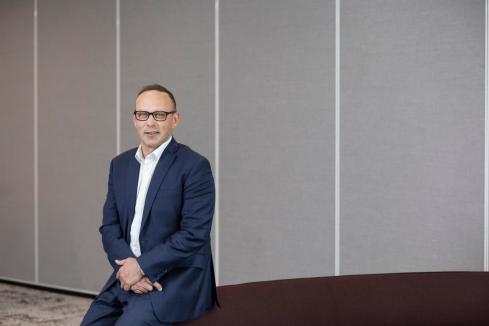Chantal Haskett says companies need to stop trying to compete with the resources sector by offering their staff more money.


THE lure of attractive salary packages offered by the resources sector is proving to be a significant drain on businesses outside that industry, with employers having to work harder than ever to retain staff.
It has become increasingly difficult – in many cases impossible – for businesses not directly related to the mining sector to compete with the salaries offered by some of the larger players.
However, the consensus among some of the state’s recruitment agents is that money is not the answer to ensuring staff retention.
Instead, career development, training and non-monetary incentives are among the ways to ensure staff remain content in their roles.
Aston Recruitment managing director Chantal Haskett said companies needed to stop trying to compete with the resources sector by offering their staff more money to stay put.
“The big mistake organisations are making at the moment is thinking that money is going to fix the problem; they are trying to compete with the resources sector by throwing money at people, but that’s not what keeps people engaged,” Ms Haskett said.
She said it was important to consider each staff member as an individual and find out what it was that motivated them.
“Money is definitely not the way to motivate people,” Ms Haskett said.
“Employers need to look at what motivates their staff members, and with Gen Ys in particular, career progression and giving them the support they need in terms of training is more important to them.”
Robert Half director Andrew Morris, who is in charge of recruitment in Western Australia and Queensland, said counter-offers had become more prominent in WA than any other state in Australia.
“Counter-offers become more commonplace in a market that is candidate-short because employers know that’s it is very difficult to find a person with the same capability,” he said.
“And that’s what we’re seeing in WA at the moment simply because it is the hottest market in Australia.”
Mr Morris said when a staff member left the business it cost the company three times that person’s salary to employ someone new.
Robert Half research has found that about 90 per cent of individuals who are offered more money end up leaving the business within six months of accepting the offer, according to Mr Morris.
“It’s not an effective way to retain staff and like I say to a lot of candidates, if you have to resign to get a pay increase what are you going to have to do the following year and the year after that?” Mr Morris said.
Surprisingly, around 95 per cent of employees resign because they don’t feel like they are being valued in the organisation and don’t feel like they have an established career path.
“We are seeing people get 20 or 30 per cent salary increases just by moving into the resources sector, so other businesses such as retail or manufacturers have to use other techniques to retain staff,” Mr Morris said.
“If an employee’s sole motivation is money it’s best to let that kind of staff member go anyway because you aren’t going to be able to compete.”
Mr Morris said employers needed to use tactics such as career training, promotion and other offerings that were not going to add much to the bottom line.
“There are all sorts of feel-good factors that we can put into a business that can really help with staff retention,” he said.
“Things like loyalty leave, gym memberships and allowing people to have public holidays off or finish early on a Friday are the types of non-monetary incentives employees can use.”
However, DMD Shelving Direct director Mark Antonio, who manages almost 30 staff at his Bibra Lake business, said he preferred to use a KPI model to keep staff motivated.
“We try to have lots of incentives for the staff members here, you have to look at incentivising your whole business if you can, and if you can do that you will find local people are more enticed to look at you as a preferred option over somewhere where you just earn a salary,” Mr Antonio said.
“If you just give someone a 10 per cent pay rise, you won’t necessarily get 10 per cent more efficiency out of them, but if you have targets and goal to achieve and KPIs to reach then they have something to aim for.”
Mr Antonio uses a variety of different incentives for staff, including quarterly monetary bonuses, weekends away and rostered days off.
St John of God Health Care CEO Michael Stanford said that, along with providing a good working environment, an employer must invest time in an individual’s own personal development.
“We certainly try to have an outstanding workplace environment, with good quality facilities and equipment and we find in health, people really value their own professional development, so we spend a lot of time improving competencies and skills,” Dr Stanford said.
“Culture matters a lot because if they weren’t working for us they could move into the public system and that is the biggest other employer, so we need to make sure our offer is better than the publics and other privates.”
Engineering consultancies Sinclair Knight Merz and local firm BG&E have their own methods of staff retention.
“Certainly, the financial incentives are part of it, but for some recruits opportunities to work on international projects might be attractive or opportunities to work in the community as well,” an SKM spokesperson said.
“We work very closely with a number of partners in the community such as Oxfam … and those organisations provide us with opportunities to work with indigenous groups, disadvantaged youth and disaster relieve in the international field; many of our staff are involved in those programs.”
BG&E director Peter De Bruin attributes the company’s low turnover of staff to its ‘team-based’ culture.
“We place a lot of emphasis on positive reinforcement and making staff feel like they are part of a team; we have a low staff turnover and that’s because we work hard to ensure that people are happy working for us,” Mr De Bruin said.
“We get together weekly to talk about projects as a team and we have ongoing individual performance reviews … it comes back to our management style and making sure people are involved at all levels because we are a people business.”
















